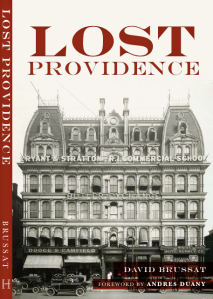
The New York Yacht Club’s bay windows on W44th St., NYC. (NYYC)
I was in New York on Monday to celebrate James Stevens Curl’s laureateship, bestowed by the Institute of Classical Architecture & Art’s 2019 Arthur Ross Awards, at the University Club of New York, for his book Making Dystopia, now high on my shelf of architectural bibles, up there even with Tom Wolfe’s From Bauhaus to Our House and Steven Semes’s The Future of the Past.

Scaffolding on NYC street. (tripadvisor)
All three are astute observers of the streets of the city, any city, surely those of New York City. But none, so far as I know, has mentioned the main reason for the desultory appearance of most streets in Manhattan. Not their fault. The answer is too in-your-face for anyone to notice. I refer to the scaffolding that mars just about every block, often the entire block, whether it is populated by traditional or modernist buildings. As regrettable are the garish cheapo plastic awnings that seem so eager to besmirch any façade not besmirched by the scaffolding. Only the numbered residential streets between the avenues seem mostly free of this architectural disease.

Nautical bay window at NYYC.
The photo on top is the New York Yacht Club on West 44th St., my favorite building in Manhattan. Look at its “galleon-style” windows, which were fashioned by Whitney Warren, of Warren & Wetmore, as the glazed sterns of British (I assume, though exactly why I’m not sure) warships in the Napoleonic era. Whenever a modernist argues that classical architecture lacks creativity, I throw this 1901 Baroque fenestration in his face, and it always sinks him. Please don’t tell me if scaffolding ever masks that glorious façade!
Across 44th is the General Society of Mechanics & Tradesmen Building, headquarters of the ICAA. At the bottom of this post is the NYYC’s famous Model Room.
Throughout the city today, scaffolding masks and uglifies the elegant carving of the first and second floors of traditional buildings but not of modernist buildings, because of course they don’t have any carving, or any other sort of decoration, so most modernist buildings, masked or unmasked, are just as ugly. You might even say that such scaffolding serves as a kind of obscene decoration, without which modernist buildings might be even more boring. Modernists probably even consider it beautiful, absurdly declaring that its beauty is in its utility. But then we don’t go to them for beauty, do we?
Thankfully, many buildings of ornate classical and other traditional styles are free of scaffolding, and they often strut along Broadway, Fifth Avenue, and other thoroughfares, such as West 44th, putting their bland modernist neighbors to shame even as the latter dominate (or rather suffocate) the streets. It is a blessing that the tedium of modernist dullards is interrupted on occasion by Beauty. That is true in New York and around the world: Let this type of interruption go forth and multiply! It is the sensibility that stokes the spirit of the ICAA, and its award programs – the idea that beauty should arise again in the world, and not in the distant future.

Model Room of the New York Yacht Club, which sits behind nautical bay windows. (NYYC)



Pingback: For one- or two-way streets? | Architecture Here and There